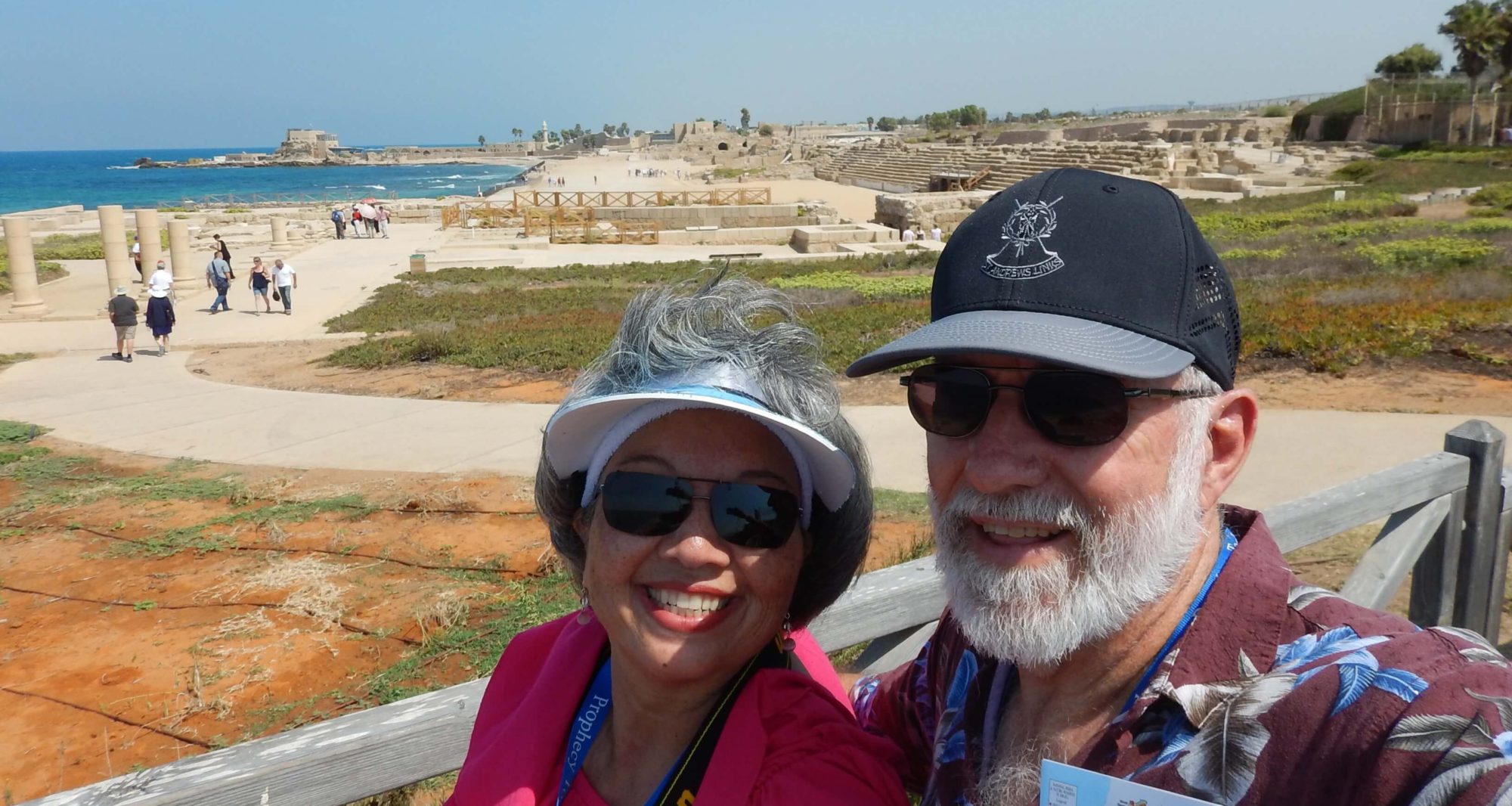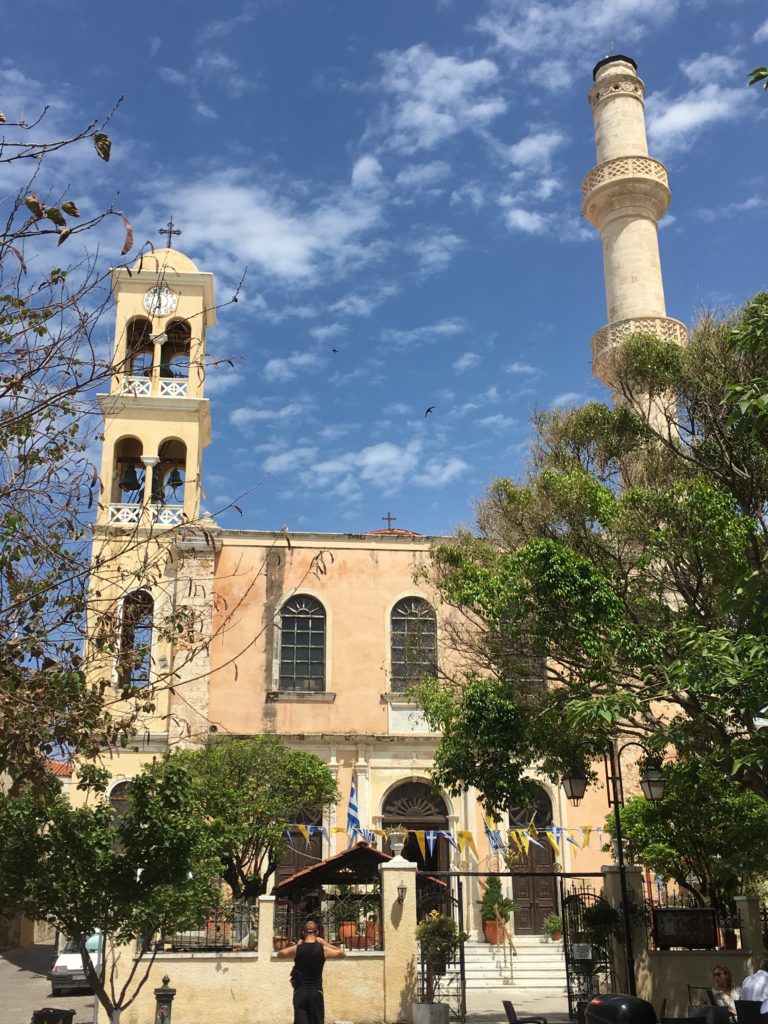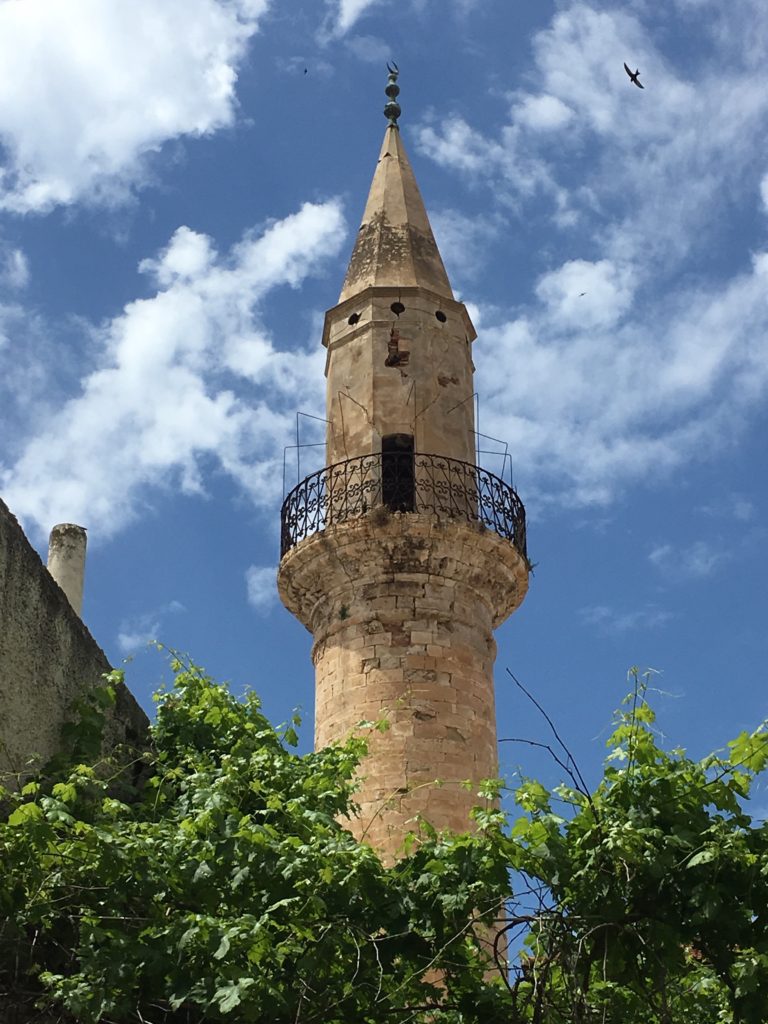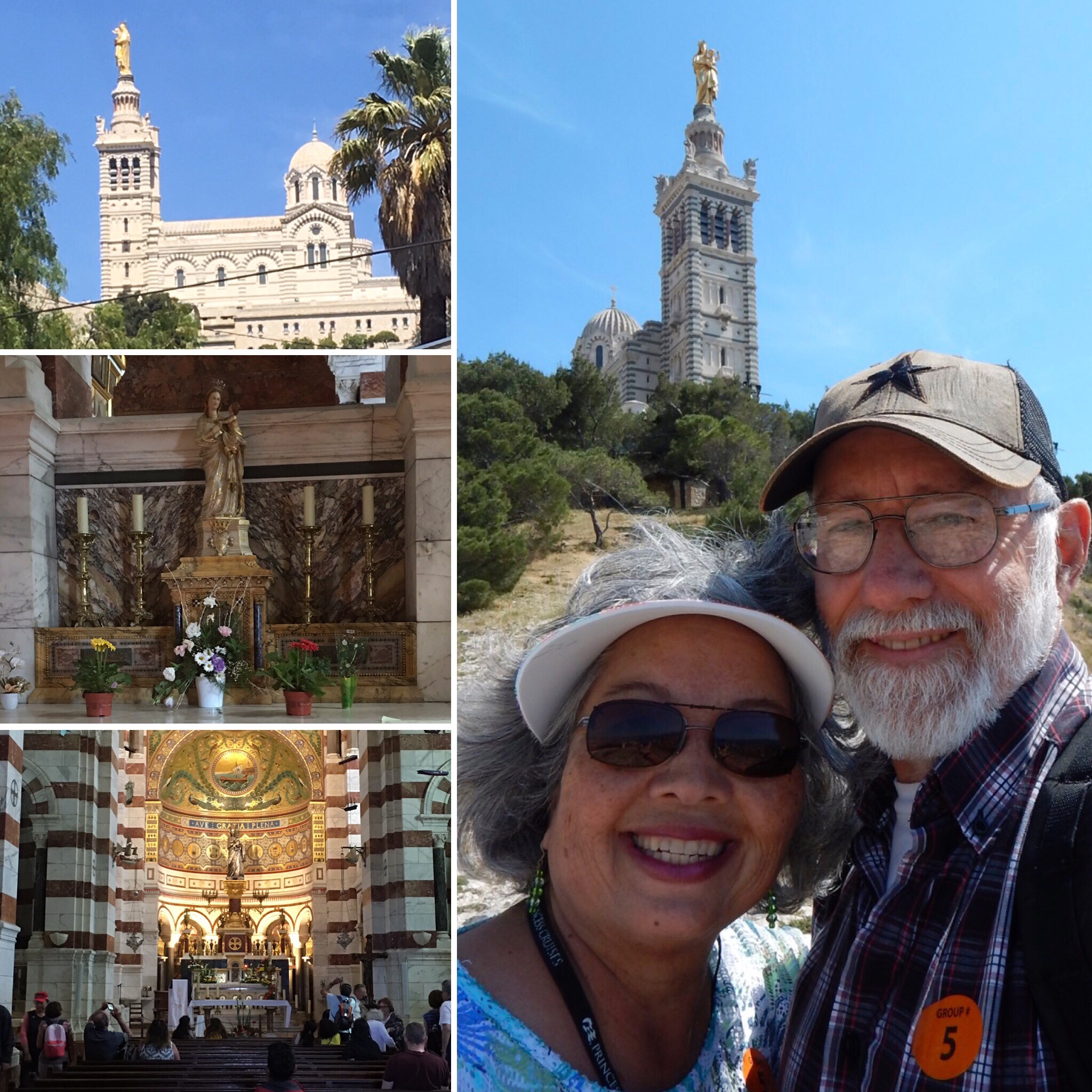“God is our refuge and strength, a very present help in trouble. Therefore will not we fear, though the earth be removed, and though the mountains be carried into the midst of the sea; Though the waters thereof roar and be troubled, though the mountains shake with the swelling thereof. Selah.” Psalm 46:1-3
Today we awoke to overcast skies and rain! Oh no! We are scheduled for a motor boat ride to Capri, and I hope the rain doesn’t cloud our vision (no pun intended!). As we came into the harbor, we could see the 8th century Castello di Arechi (Lombard Castle) perched high on a hill overlooking the city. It was originally used as a fort. Salerno is known for having the world’s first medial school, Scuola, dating from the 10th century and the Verdi Theater, an opera theater dating from 1872!

Capri
Overcast skies this morning as we approached the port of Salerno, so we packed our rain jackets today! It was steadily raining as we disembarked the Emerald Princess. We waited in the rain as our local tour guide passed out our radios before leading everyone to the boat for our hour-long jet boat ride to Capri. The trip started out quite gloomy and wet, but the rain stopped after about 45 minutes into the boat trip. The Amalfi coastline was stunning with houses dotting the rugged cliffs.
Capri is a large island just off the Sorrento peninsula that forms the southern border to the Bay of Napoli. This island was first discovered by the Greeks, but eventually it was purchased by Augustus, emperor of Rome. Later, in the latter part of his life, Emperor Tiberius came to Capri and he remained there until his death. As we approached Capri from its southern coast, we could easily see Mt. Salerno, the highest peak on the island at 1900 feet above sea level.

By the time we arrived in Capri’s harbor, the rain had become a drizzle. We rode the funicular to the top of the island where there were many different shops, a church, and the symbol of Capri – the clock tower. Most of the stores were very expensive. Names like Prada were not uncommon to see. While most places we had visited prior to Capri had many souvenir shops, here we had to search diligently before finding one. John did manage to find a gelato shop, so he was happy, and we felt it was important to sample Capri gelato! (Spoiler alert: it was amazing!)

Clockwise from top-left: hydrangeas in a restaurant; $1800/night hotel; electric cars are the only transportation allowed; church; gelateria (one is for John!); clock tower
As we strolled around, we passed the Charterhouse of St. James, a monastic estate of the Carthusian order, which was founded in the 14th century by Giacomo Arcucci. No longer a monastery, it serves as both a high school and cultural center. We continued our walk to the Gardens of Augustus, which had several beautiful overlooks including one where we could see the “Faraglioni stacks,” three rock pinnacles formed over time by erosion from the wind and sea. The gardens were donated to the island by the Krupp family on the condition the gardens be free to the public. After riding the funicular back down to the harbor area, we boarded a boat for Sorrento.

Left: Faraglioni stacks. Right top to bottom: Gardens of Augustus, town of Capri, monastery, cliffs
Sorrento, Italy
Greek legend says this town was once the home of mermaids, or the siren, who sang beautiful songs to lure sailors here to their doom. Today, 40,000 people live here in the homes built upon the volcanic cliffs. Sorrento overlooks the Bay of Naples, and from the harbor, we rode a minibus up a cobbled tightly winding road to the main part of Sorrento at the top of the cliffs. It was now pouring rain as we scurried into the Vela Bianca, our restaurant for lunch. Our table was already set with white wine, bottled water, and bread. We sat at a table for four, but no one sat with us, so we had some alone time. The atmosphere in the restaurant was very friendly, and we were hungry. Bring on the Italian cuisine!

Top left: Appetizer – pasta stuffed with spinach and ricotta in a tomato sauce
Top right: Entree – Florentine (chicken) scallopini with mozzarella and tomato Bottom left: dessert – Lemon cake
Bottom right: bread basket
After lunch we walked around the town. There was an outdoor market that had the biggest lemons I have ever seen!

We also visited a store that had beautiful wood furniture with a type of inlay that was beautiful. We then boarded our motor coach for the hour-long trip to Pompeii driving through the region of Napoli. Naples is the third largest Italian city after Rome and Milan. It is the largest metropolitan city in southern Italy and is located at the northern part of the bay of Naples.
Pompei
For 800 years it was a thriving city until it was destroyed by Mt. Vesuvius. This mountain is still active today. Its last eruption was in 1944, but it is still considered an active volcano. Although “resting,” or dormant at the moment, it is considered the most dangerous volcano in the world because if it erupts violently again, it will impact the city of Naples where more than 1 million people reside. Italian authorities do have an evacuation plan for those who live in the “red zone,” which includes the city of Naples. Volcanologists say they can determine if a volcanic eruption is imminent from all the devices they have installed on Mt. Vesuvius, and they can alert the public well in advance of an impending eruption.

Mt. Vesuvius
One plus of the eruptions is that the soil is enriched with volcanic minerals making it very fertile. The main agricultural crop grown here is the olive, and there are twenty different “tastes” of olives produced here. Next, grapes are grown for the wine of this region. The third crop is the lemon from which limón cello is made, and tomatoes are the fourth main vegetable grown here in the very arable soil.
History of Pompeii: In the 7th century BC, there was a functioning harbor here and an independent thriving city. By the 3rd century BC, Pompeii was under Roman rule. In 79 AD, the top of Vesuvius exploded violently spewing tons of ash and debris into the atmosphere and down upon the unsuspecting towns of Pompeii and Herculaneum. (This was approximately 75 years after the birth of Jesus.) For 3 days, volcanic debris and ash rained down upon the city of Pompeii. During the eruption most of the inhabitants of Pompeii fled. There are only 1,200 deaths that are known today, and they would be those who were unable to flee the city. These people, the elderly, the sick, and the very young, died from suffocation from the volcanic gases and ashes. The city was buried in 30 feet of volcanic ash, and the volcanic debris created a 3-mile extension of the coast of Pompeii. What once was the thriving harbor of Pompeii was now new land formed by the volcanic ash and lava.

In the early 1700s, a farmer discovered some of the remains of Pompeii when he was digging a well. In 1748, King Charles of Bourbon ordered the excavation to begin. Today only 2/3 of Pompeii has been uncovered. This is approximately 165 acres. Excavation has been stopped for about 10 years now, leaving 55 acres still to be excavated at a later date.
As we walked through the ruins, we found that many of the things we see today were also apparent in Pompeii. Examples are sliding doors, pedestrian crosswalks, sidewalks, and speed bumps! Since there was no electricity, the people of Pompeii implanted white marble pieces in their cobbled roads that would reflect torchlight at night, serving as a rather primitive type of “night light” for the pedestrian to follow.

Clockwise from top-left: stepping stones (crosswalk); “beware of dog” carving; marble pieces to reflect torchlight; ruts in concrete blocks are for sliding a door or gate to open.
Pompeii was a very developed city. 35 bakeries have been excavated as well as many eateries, public fountains, and other businesses. Structures in Pompeii were made of basalt, terrecotta tile, and marble. The fountains were not only used for drinking, but they were also used to wash the streets and clear them of waste! Bakeries milled their own flour as evidenced by the grinding mills in them. The main square, also known as the Forum, was a pedestrian area. There were no carts allowed, so if you had to carry goods from one end of town to the other, you could rent an animal to do so. There are buildings that have engraved pictures of the animals that could be rented. At one end of the Forum was a huge temple dedicated to Jupiter, the Roman equivalent of the Greek god, Zeus. This temple was flanked by two arches. One was dedicated to Nero and the other to Caligula.

Clockwise from top-left: Vesuvius looms over Pompeii; pillars from the main square or Forum; Pompeii street; adult body; dog body; 3-year old boy body; temple of Jupiter
Herculaneum
This city was located at the foot of Mt. Vesuvius. Approximately 5,000 people lived there, and they all died during the eruption. Most likely a pyroclastic flow engulfed the city before anyone had an opportunity to flee. As this boiling volcanic sludge cooled and hardened, it preserved the trapped citizens of the city. Today, only a small amount of the city has been excavated because a new city had been built upon the remains before anyone realized there was a city buried beneath the surface. It is believed that only 25% of the city has been excavated.
Cameo Factory
Cameos are a type of jewelry made from seashells, mother of pearl, or coral. It is intricately carved by a master cameo maker into profiles of women (most common), animals or flowers. The more detailed the design, the more expensive the piece. While cameos are usually white or cream colored, some can be blue or pinkish. We were able to watch a master cameo maker work on a cameo. He was creating the curls of a woman’s hair on the cameo while looking through a magnifying glass while carving.
 Top-left: cameo being carved. Bottom-left: master cameo maker. Right: finished product.
Top-left: cameo being carved. Bottom-left: master cameo maker. Right: finished product.
Next stop: Kotor, Montenegro













































 Top-left: cameo being carved. Bottom-left: master cameo maker. Right: finished product.
Top-left: cameo being carved. Bottom-left: master cameo maker. Right: finished product.


















